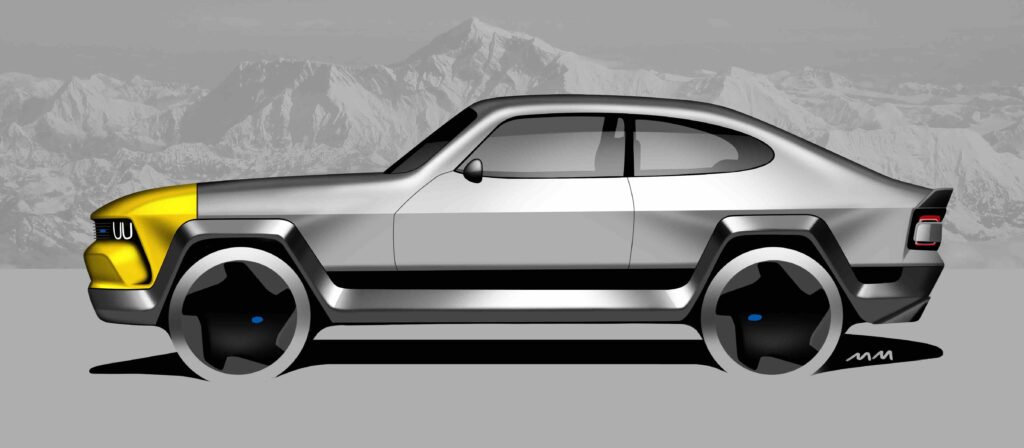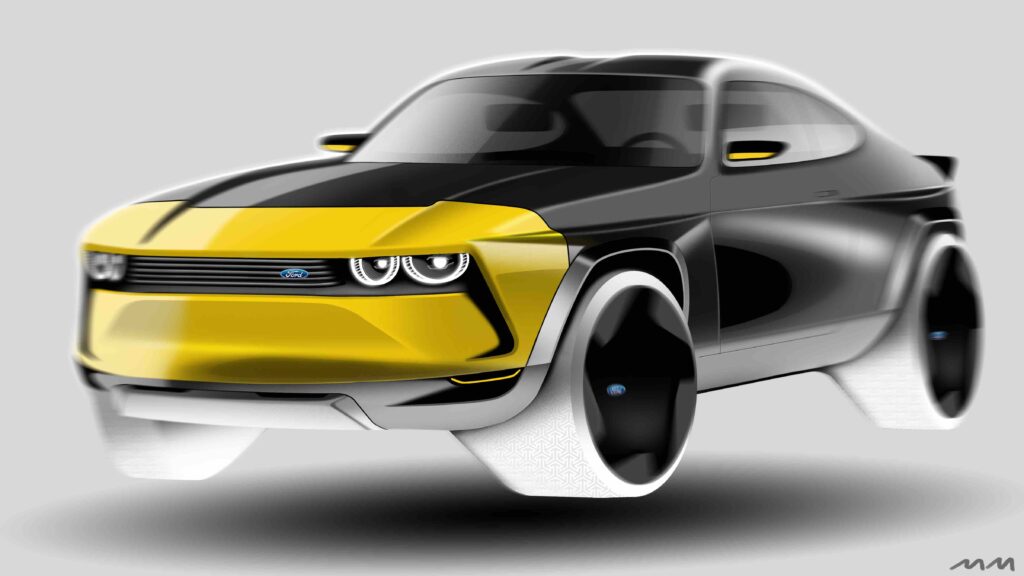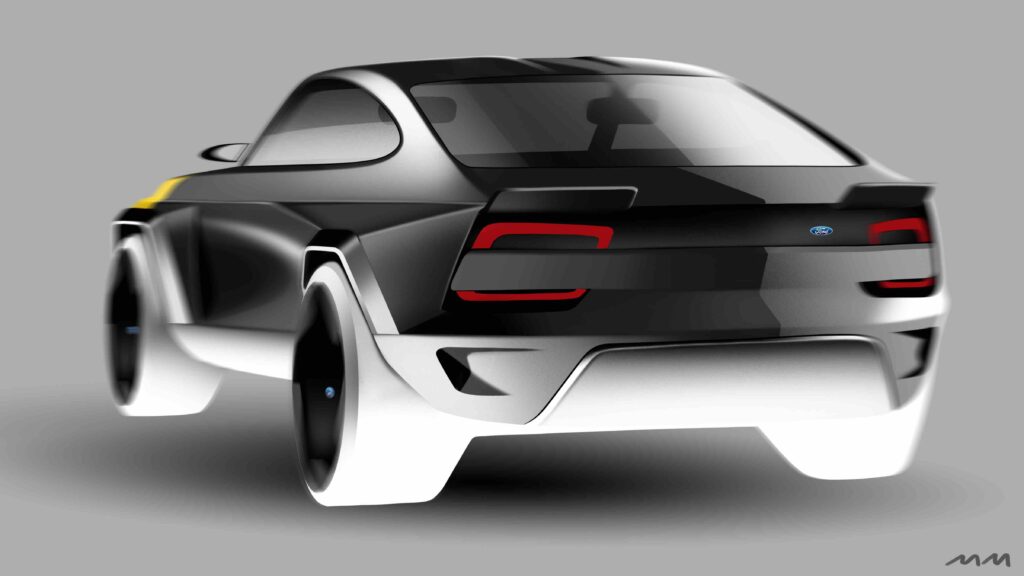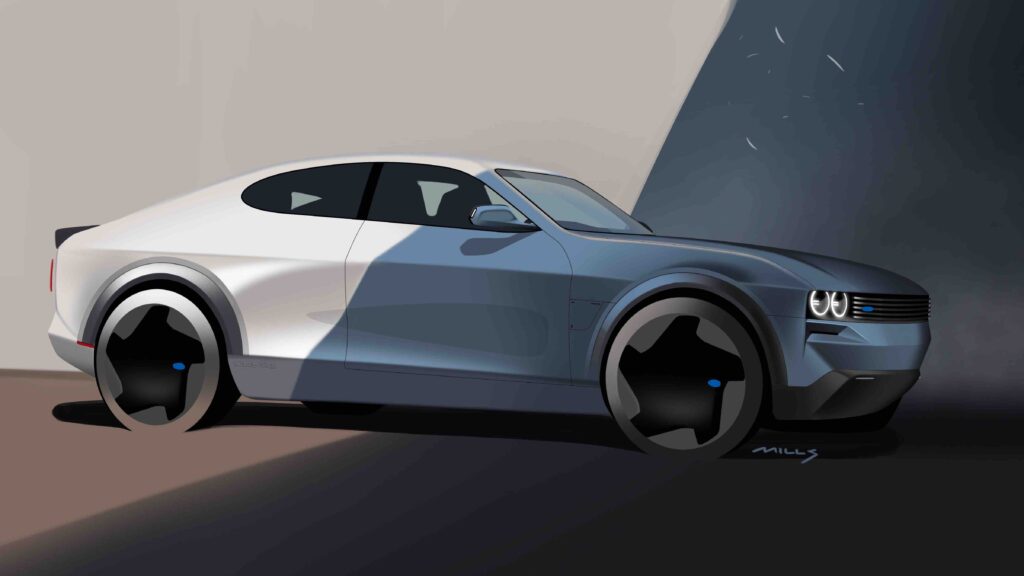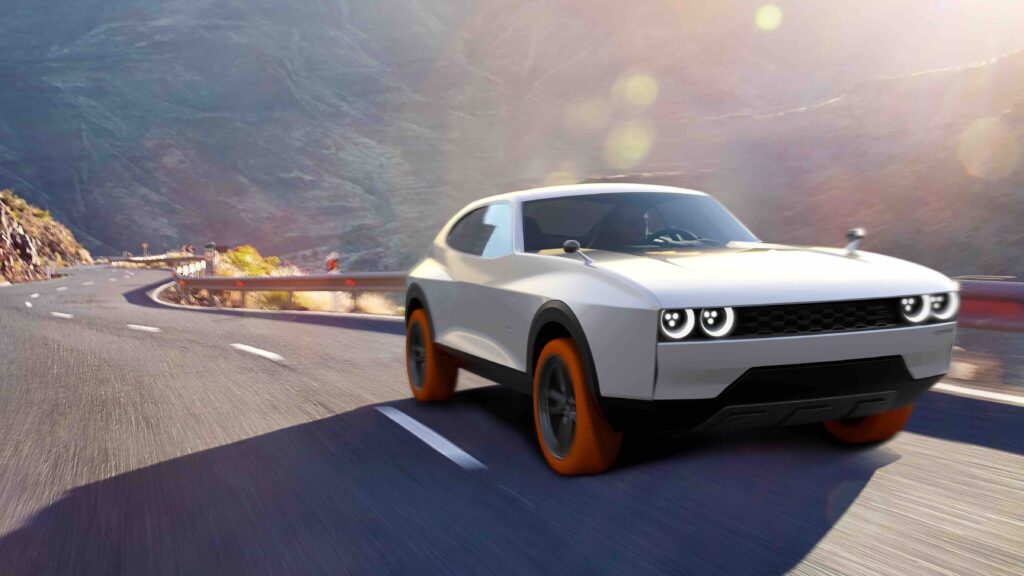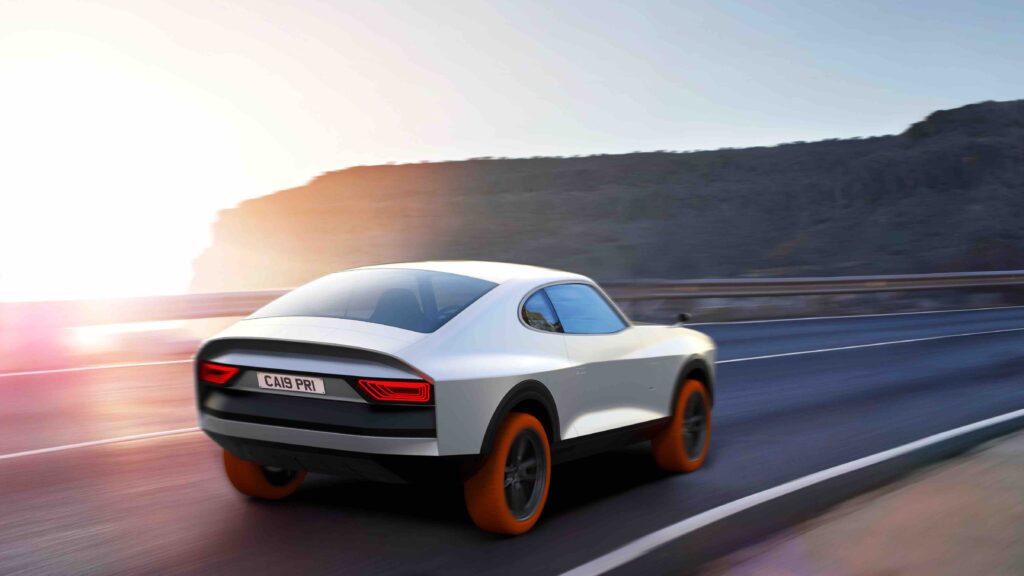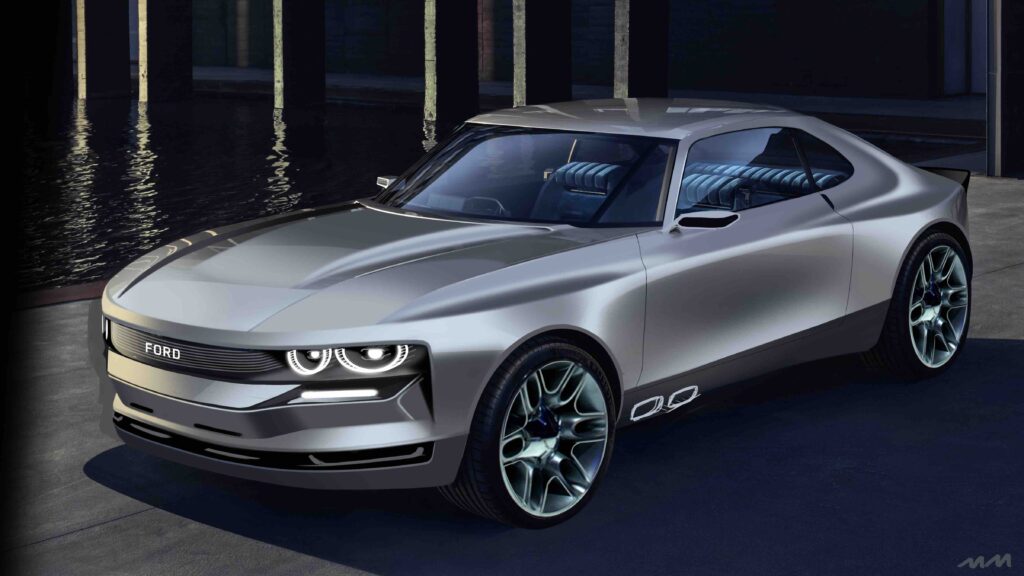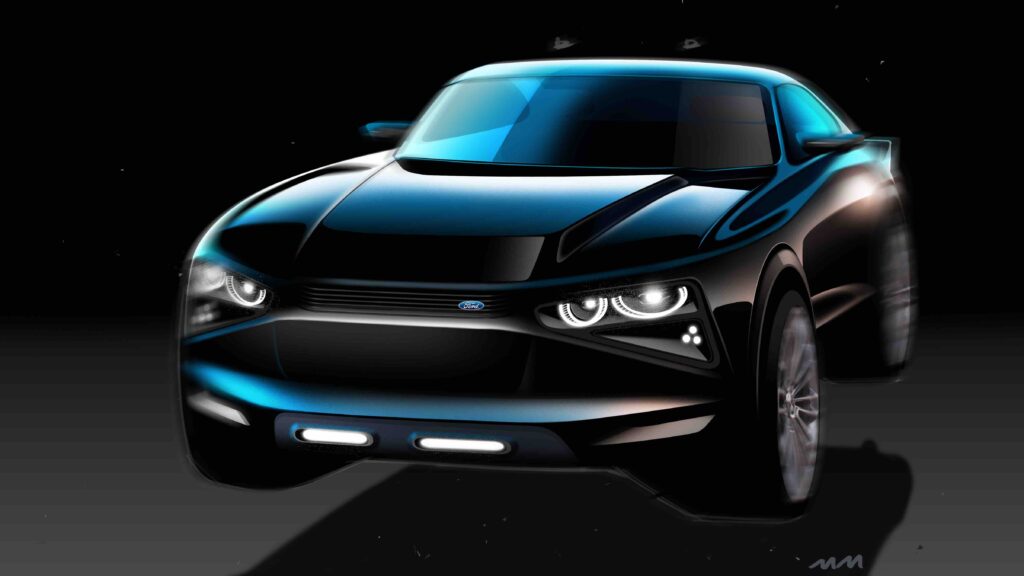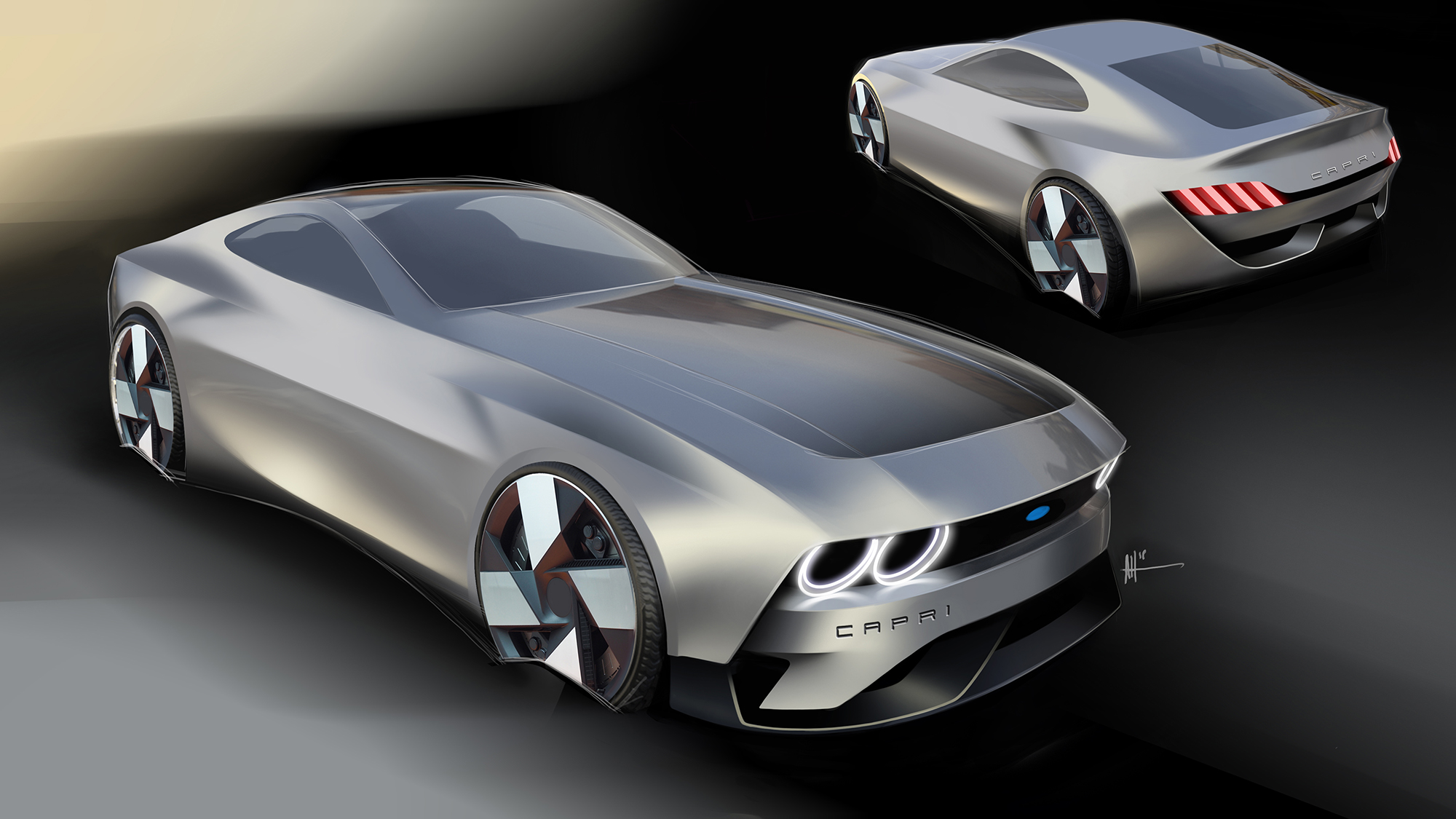
Ford Capri Concept
After a brief meeting with the Chief Editor of Autocar we were tasked with redesigning a Ford Capri to sit within the modern Ford line-up.
Overview
Envisage were tasked with redesigning an electric Ford Capri to sit within the modern Ford line-up. The challenge was to propose something whose styling said compact, stylish, agile, at least semi-sporting and, above all, relevant to modern life. The original Capri worked so well because it fitted people’s lives at the time.
It was proposed that the new Capri should be a kind of diminutive, high-rolling electric fastback coupé, reminiscent of a stubby, downsized Aston Martin DBX concept but with the footprint of a Ford Ecosport, the car could be proud and practical, with sportiness chucked in, with its height providing battery space more easily than a saloon.
With a bit of off-road toughness, with the wheel design and tyre tread adding character, along with a non-corporate grille (nothing says ‘mainstream’ more than a corporate grille). A radical roofline with a fastback rear meeting a rising belt, with more extravagant surfacing than you normally see on a small car. Maybe even a rear window outline, to echo the original Capri.
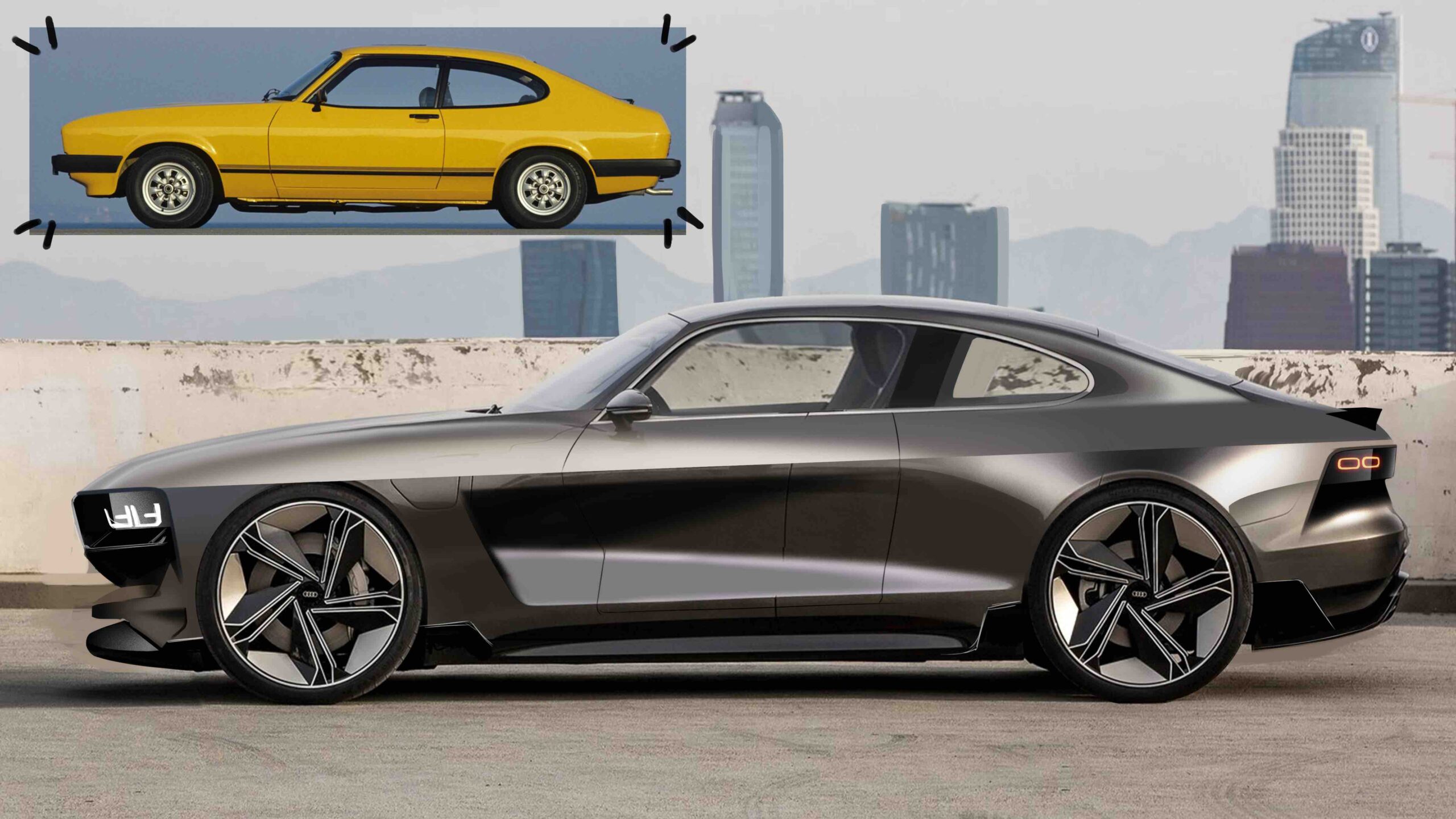
Approach
The job took three visits to Coventry by the Autocar team over about six weeks: the first to outline the basics of the project (a compact, electrically powered two-plus-two coupé) and to meet our designers and engineers; the second to review progress and discuss the design options early work would inevitably raise; and the third to view the finished design.
The team ensured the car was big enough but not too big, proposed its powertrain and suspension, and looked after essential details such as the coupé crossover’s compatibility with the myriad rules that govern all new cars such as pedestrian protection detail, crash capability, headlight heights, vision and screen angles etc.
Many discussions were had over the design period looking at grille/bonnet/screen/roofline/spoiler/exhaust/seat styles/console shapes/fascia designs /steering wheels/instrument bezels/gear levers and all the rest even down to colours and textures. By the second meeting, it was decided that the car would utilise familiar but modernised Capri styling influences and be similar in length to the 4.3-metre original, though shorter to the eye because it would ride around 15cm higher. It would also be up to 20cm wider to obey modern cockpit and styling dictates, as well as to accommodate the side-intrusion structures that have become mandatory since the original Capri was new. The chosen wheels were ‘reasonable’ 20-inchers.
The batteries, mounted beneath the occupants either side of the tailshaft, would run to 500kg, giving the car a reasonable kerb weight of 2200kg. Our calculations showed the car would achieve a 150- mile range, a 125mph top speed and 0-60mph acceleration of around 7.0sec.
Conclusion
We deployed our well-practised expertise at car creation, to design it as a lifted all-road variant of the original Ford Capri body style. The aim was to make it recognisable as a Ford Capri whilst changing and updating the body style.

